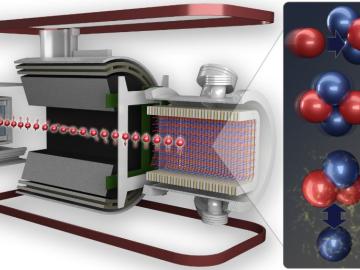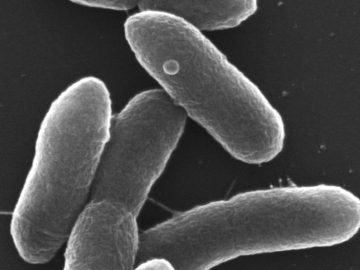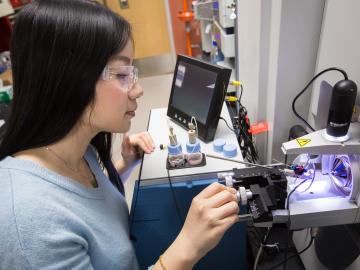
Filter News
Area of Research
- (-) Energy Science (33)
- (-) Materials (49)
- Advanced Manufacturing (2)
- Biology and Environment (20)
- Computer Science (2)
- Energy Frontier Research Centers (1)
- Fusion and Fission (6)
- Fusion Energy (1)
- Isotope Development and Production (1)
- Isotopes (2)
- Materials for Computing (2)
- National Security (3)
- Neutron Science (18)
- Nuclear Science and Technology (6)
- Quantum information Science (1)
- Supercomputing (24)
News Topics
- (-) Advanced Reactors (3)
- (-) Bioenergy (17)
- (-) Grid (10)
- (-) Nanotechnology (22)
- (-) Physics (14)
- (-) Quantum Science (10)
- (-) Simulation (1)
- 3-D Printing/Advanced Manufacturing (34)
- Artificial Intelligence (6)
- Big Data (1)
- Biology (6)
- Biomedical (4)
- Biotechnology (2)
- Buildings (8)
- Chemical Sciences (20)
- Clean Water (1)
- Composites (6)
- Computer Science (13)
- Coronavirus (4)
- Critical Materials (10)
- Cybersecurity (4)
- Energy Storage (36)
- Environment (17)
- Exascale Computing (2)
- Fossil Energy (1)
- Frontier (2)
- Fusion (2)
- High-Performance Computing (4)
- Isotopes (5)
- ITER (1)
- Machine Learning (5)
- Materials (44)
- Materials Science (39)
- Mercury (1)
- Microscopy (12)
- Molten Salt (2)
- National Security (5)
- Neutron Science (23)
- Nuclear Energy (5)
- Partnerships (11)
- Polymers (9)
- Quantum Computing (1)
- Security (3)
- Summit (3)
- Transportation (18)
Media Contacts

Geoffrey L. Greene, a professor at the University of Tennessee, Knoxville, who holds a joint appointment with ORNL, will be awarded the 2021 Tom Bonner Prize for Nuclear Physics from the American Physical Society.

Led by ORNL and the University of Tennessee, Knoxville, a study of a solar-energy material with a bright future revealed a way to slow phonons, the waves that transport heat.

Through a one-of-a-kind experiment at ORNL, nuclear physicists have precisely measured the weak interaction between protons and neutrons. The result quantifies the weak force theory as predicted by the Standard Model of Particle Physics.

The combination of bioenergy with carbon capture and storage could cost-effectively sequester hundreds of millions of metric tons per year of carbon dioxide in the United States, making it a competitive solution for carbon management, according to a new analysis by ORNL scientists.

Prometheus Fuels has licensed an ethanol-to-jet-fuel conversion process developed by researchers at Oak Ridge National Laboratory. The ORNL technology will enable cost-competitive production of jet fuel and co-production of butadiene for use in renewable polymer synthesis.

ORNL scientists have modified a single microbe to simultaneously digest five of the most abundant components of lignocellulosic biomass, a big step forward in the development of a cost-effective biochemical conversion process to turn plants into

Researchers at ORNL used quantum optics to advance state-of-the-art microscopy and illuminate a path to detecting material properties with greater sensitivity than is possible with traditional tools.

Scientists at Oak Ridge National Laboratory and Ohio State University discovered a new microbial pathway that produces ethylene, providing a potential avenue for biomanufacturing a common component of plastics, adhesives, coolants and other

Oak Ridge National Laboratory researchers have developed artificial intelligence software for powder bed 3D printers that assesses the quality of parts in real time, without the need for expensive characterization equipment.

Scientists at Oak Ridge National Laboratory have demonstrated a direct relationship between climate warming and carbon loss in a peatland ecosystem.


